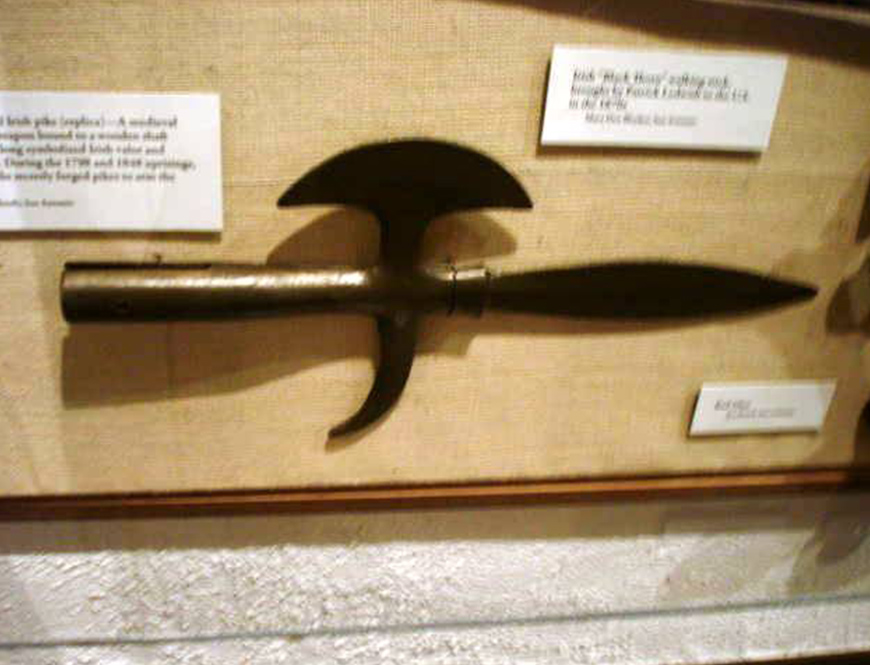This object is a replica of a halberd – a type of pike weapon used in Medieval Europe. A halberd is a medieval weapon that evolved from a two-handed axe. Over time, parts of the axe changed: the handle became much longer, more like a spear, the axe head became more oblique instead of square, a beak was added on the opposite side of the blade, and a long, pointed blade was added to the top end. Not all these changes were made simultaneously, but gradually and by different peoples.
The halberd was useful in battle when fighting against heavily armored foes, as the long handle allowed for a full body swing, enabling the blade to cleave through metal. The point at the end could be used for thrusting, and the beak on the back allowed the fighter to hook and drag horsemen from their mounts.
Halberds were used primarily between 1300 and 1650. They provided a weapon with a longer reach for infantry to use, especially when fighting against mounted enemies since they could be used as both a pike and an axe. They began to decline in use after that time, however, when fighting styles began to change. By the 1800s when firearms started to come into use, the halberd became almost exclusively ceremonial, instead used as a symbol of authority as with the Papal Guards.
During the Civil War in 1861, Company B of the Fifth Texas Mounted Volunteers consisted entirely of soldiers armed with lances, which are a type of pike similar to a halberd but without the axe head. The idea of being a lancer was very popular in Southern Texas and in 1862, George Washington Carter received permission to recruit an entire brigade of lancers, which were designated as the Twenty-first, Twenty-fourth and Twenty-fifth cavalry regiments. The Twenty-first regiment was divided into eleven companies. They served mainly as scouts and raiders to protect Texas from invasion and were finally disbanded in the spring of 1865.
